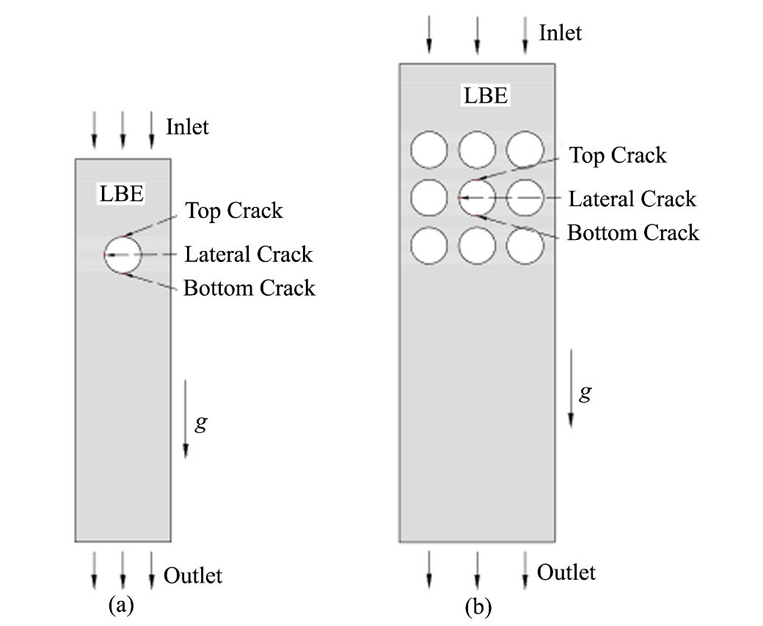When steam generator tube rupture (SGTR) occurs in the lead-bismuth cooled fast reactor, high pressure water/steam flows into the primary side filled with high temperature liquid metal. According to the location and size of the rupture, the leakage behaviors of the rupture may involve leak-before-break (LBB), single-phase critical flow or two-phase critical flow. Under the action of high temperature liquid metal, different forms of heat and mass transfer behaviors occur in the two-component multiphase system of water-metal, which has an important influence on the safe operation of the lead-bismuth cooled fast reactor.
This study aims at the bubble dynamic behavior in the descending flow field of liquid lead-bismuth alloy (LBE) in the tube bundle in different stages of SGTR caused by microcrack on the surface of the heat transfer tube during the drying stage and low flow single phase steam permeates the primary side.
Based on the VOF method, a numerical simulation model of steam-LBE two-phase flow and phase interface capture was established to study the bubble growth and transport behaviors from single tube or 3×3 tube bundle in the downward flow field of high temperature LBE. The SST k- ω model was employed to solve the turbulence equation. The physical law of steam bubble movement was analyzed and its influence on the heat transfer and operation stability of steam generator was evaluated.
The results show that the dynamics behaviors of steam bubbles in the descending flow field are quite different from these in static liquid or upward flow. The steam bubbles may slide along the heat transfer tube surface after departure from the crack under the actions of LBE descending flow field and buoyancy. The steam bubbles may form a steam film covering the heat transfer tube surface or accumulate by quantity in the bundle.
These phenomena adversely affects the flow stability of the LBE and the heat transfer of the steam generator.




